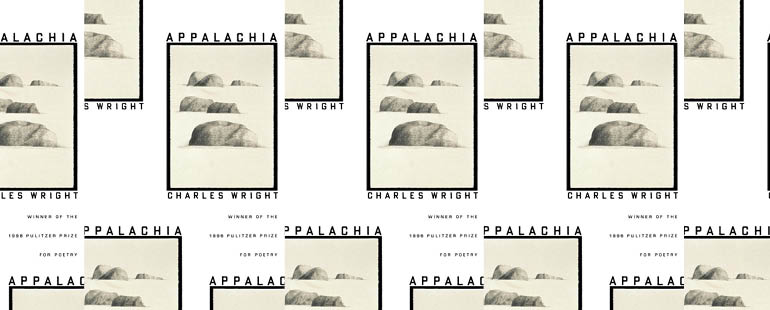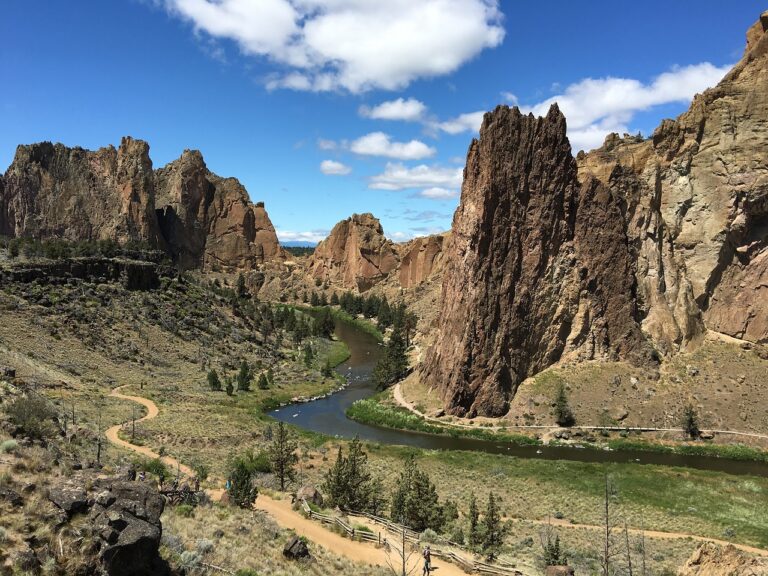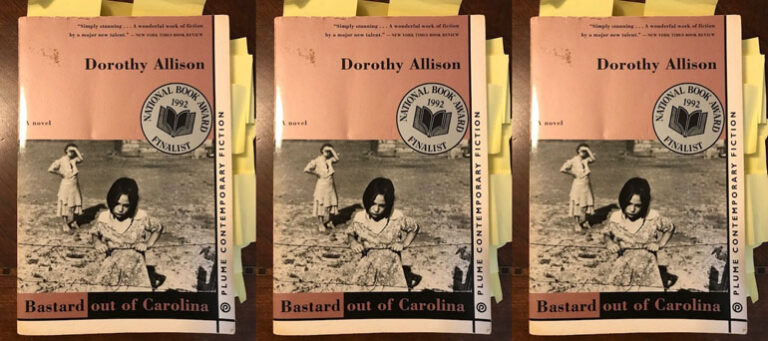The Two Landscapes in Appalachia

Charles Wright’s Appalachia (1998), as the title suggests, is firmly rooted in a specific landscape, and yet also includes quotes and references that wander the globe, and frequently speaks to or invokes God, a figure who is everywhere at once. The use of quotes throughout work synthesizes Wright’s personal, specific experience with writers and artists through the ages, and mirrors the God that Wright invokes throughout the collection. God’s consciousness is expansive, wide-ranging, everywhere at once and also right here, right now, in this very spot and this very moment, just like Wright’s work.
In “Indian Summer II,” Wright starts both with images from his specific landscape at a specific time of year and with clear references to spiritual or religious practice and lineage. The poem begins: “As leaves fall from the trees, the body falls from the soul. / As memory signs transcendence, scales fall from the heart. / As sunlight winds back on its dark spool, / November’s a burn and an ache.” The landscape and the self and the God or the experience of spiritual longing and the reach for transformation are one and the same throughout Appalachia, as shown here. The leaves falling from trees mirror the body falling from the soul. The sunlight is both part of the landscape and also is made utterly domestic by pairing it with “its dark spool,” calling to mind a spool of thread that one could hold in one’s hand. Finally, the month itself—November—is depicted not as a state of the natural world or as simply a facet of the landscape, but as “a burn and ache,” an emotional state, a feeling.
“Indian Summer II” doesn’t actually name or directly address God, but at this point in the collection so many of the previous poems have done so that God is an implied character in the scenes, a de facto presence in both landscape and poem and Wright’s conversation with us, the reader. The reader is also an implied part of the conversation, after all, even when the reader is not addressed directly. The references to a woman being stoned to death, to “the serpent in the Garden,” and to Augustine, the Christian saint and philosopher, all cinch the poem tightly to the Christian framework that is present throughout the book, and build the sense of expansiveness, that the collection is not only happening in Appalachia, but everywhere, and in all times.
The quote attributed to Augustine that Wright uses in this poem seems particularly apt for the collection as a whole. “We live in two landscapes, as Augustine might have said, / One that’s eternal and divine, / and one that’s just the back yard.” Wright shows us his backyard throughout the collection, and most of the tangible details in this poem come from that backyard—the turkey buzzard, the recycling tubs “like flower bins at the curb,” the dead leaves that will be “purple in spring.” The landscape is both definite in its mortality and ordinariness, and also tinged throughout with the divine, the extraordinary, the mystical. The autumn stars “start to flash and transverberate.” The garden is not just any garden but the Biblical Garden, the serpent is not just an ordinary garter snake. The oak does not just have sap, it has “residual blood” in its veins.
The landscape, like this collection, is made of many parts that cohere to create a whole. In this way, Wright’s use of wide-ranging quotes and references not only mirror the expansive mind of God, but also the collection of beings, presences, moments, and artifacts that make up a landscape. The landscape of Appalachia is not just the oak tree or the turkey buzzard. It is not just what Wright places his attention on. It is also not just November, but, as the collection shows us by moving through multiple times and scenes, the landscape is the synthesis of many times and characters. Returning to Wright’s “two landscapes,” there is also not only the physical landscape Wright describes but also the spiritual or religious landscape within and around the physical.
Wright uses a line that’s far indented to the right several times in “Indian Summer II,” and elsewhere in Appalachia. In “Indian Summer II,” this jump of the line to the right, causing the reader’s eye to leap over from where it expected to land (back at the left margin) to a spot far over to the right of the page, seems to mimic or herald a leap in the poem’s logic or musing, to encourage the reader to leap with the poem. In the first stanza, this indentation marks where the lines change from a more gentle, lyrical description, to the charged language of “burn and ache.” In the final stanza, the separation of the indented line helps to separate and differentiate the “eternal and divine” landscape from “just the back yard,” further emphasizing that the two are distinct, even while they are also linked to each other. The final stanza is also an echo of the first stanza, making a loop of the poem, pairing the spiritual landscape—“the body falls from the soul”—with the back yard landscape: “leaves fall from the trees.”
The poem titled “What Do You Write About, Where Do Your Ideas Come From?” provides an answer in its first lines: “Landscape, of course, the idea of God and language / Itself, that pure grace / which is invisible and sure and clear.” If there were any doubts that Appalachia is yoking together the landscape and God, the mind of the mortal self and the unknowingly expansive mind of God, Wright answers those questions directly. Inspiration comes from the landscape, of course, and God, and language. Language in these poems allows Wright to make God a sort of second landscape, one that is always simultaneous to the earthly one the speaker (and reader) occupies. Quoting and speaking in answer to historical figures ranging from Wang Wei to Renoir, writing from Virginia to Montana to Italy, Wright is always writing in two landscapes, the physical and the metaphysical. “What God is the God behind the God who moves the chess pieces,” he writes in “It’s Turtles All the Way Down,” and then: “What mask is the mask behind the mask / The language wears and the landscape wears, I ask myself.” Appalachia not only uses language as its medium, but is also an interrogation of the limits of language to attempt to describe the unperceivable and the indescribable. The mask that language wears—what is behind it?
Appalachia grapples with mortality throughout its two landscapes—the inescapable change and death of the human landscape, and the eternal landscape, beyond change. Towards the end of the collection, in “American Twilight,” Wright writes,
Nevertheless, it’s still summer: cicadas pump their boxes,
Jack Russell terriers, as they say, start barking their heads off,
And someone, somewhere, is putting his first foot, then the second,
Down on the other side,
no hand to help him, no tongue to wedge its weal.
Beside the pure auditory pleasure of “wedge its weal,” these images bring the seemingly simple (and nearly unending in its predictability) summer landscape of cicadas and barking dogs into direct juxtaposition with mortality. Someone is dying, is “putting his first foot, then the second, / Down on the other side,” and that someone is alone, “no hand to help him.” These feet echo the placement of the poems in Appalachia, a collection with one foot in the here and now landscape of Charles Wright’s yard, and one foot in the eternal divine.


